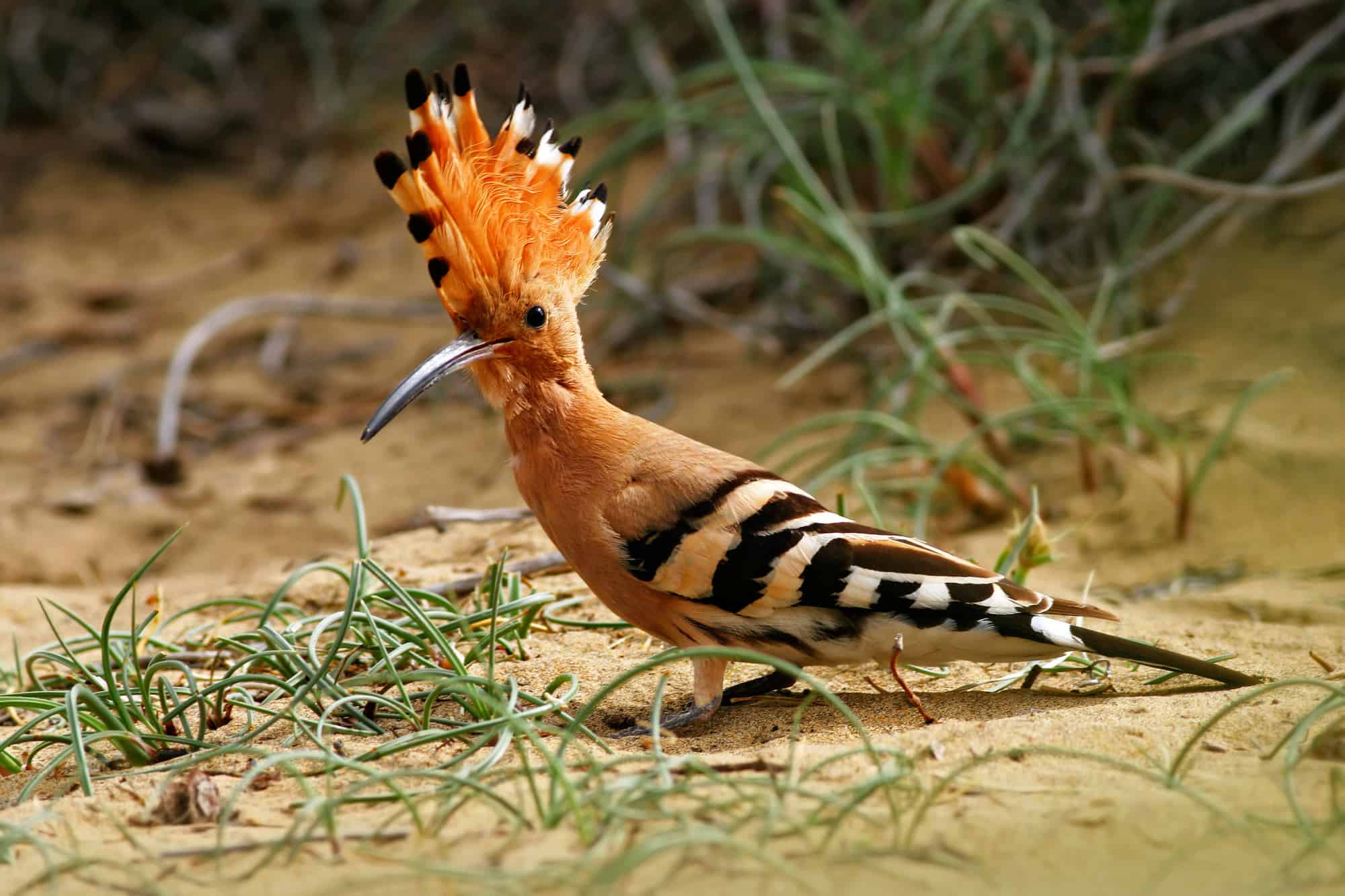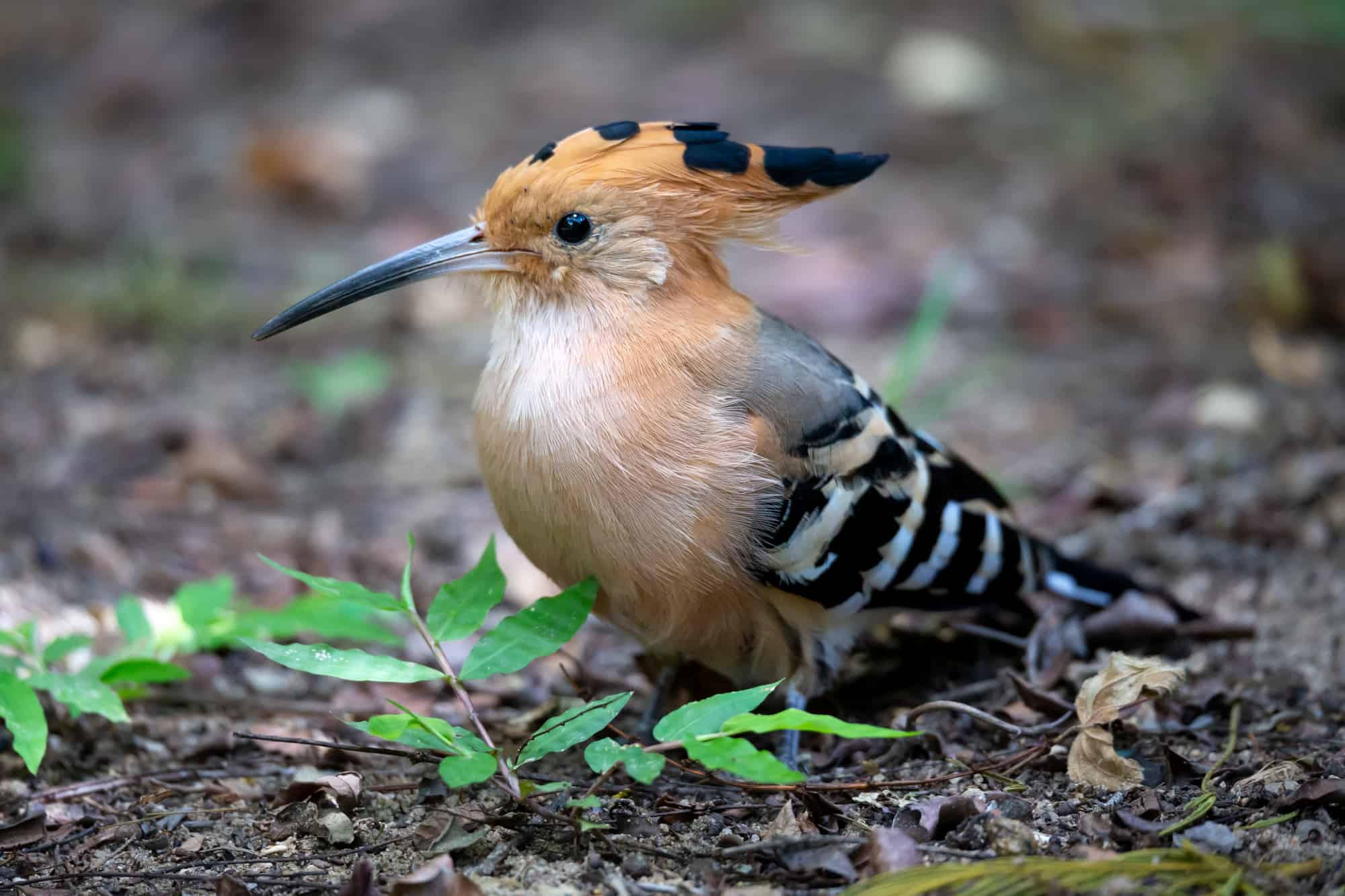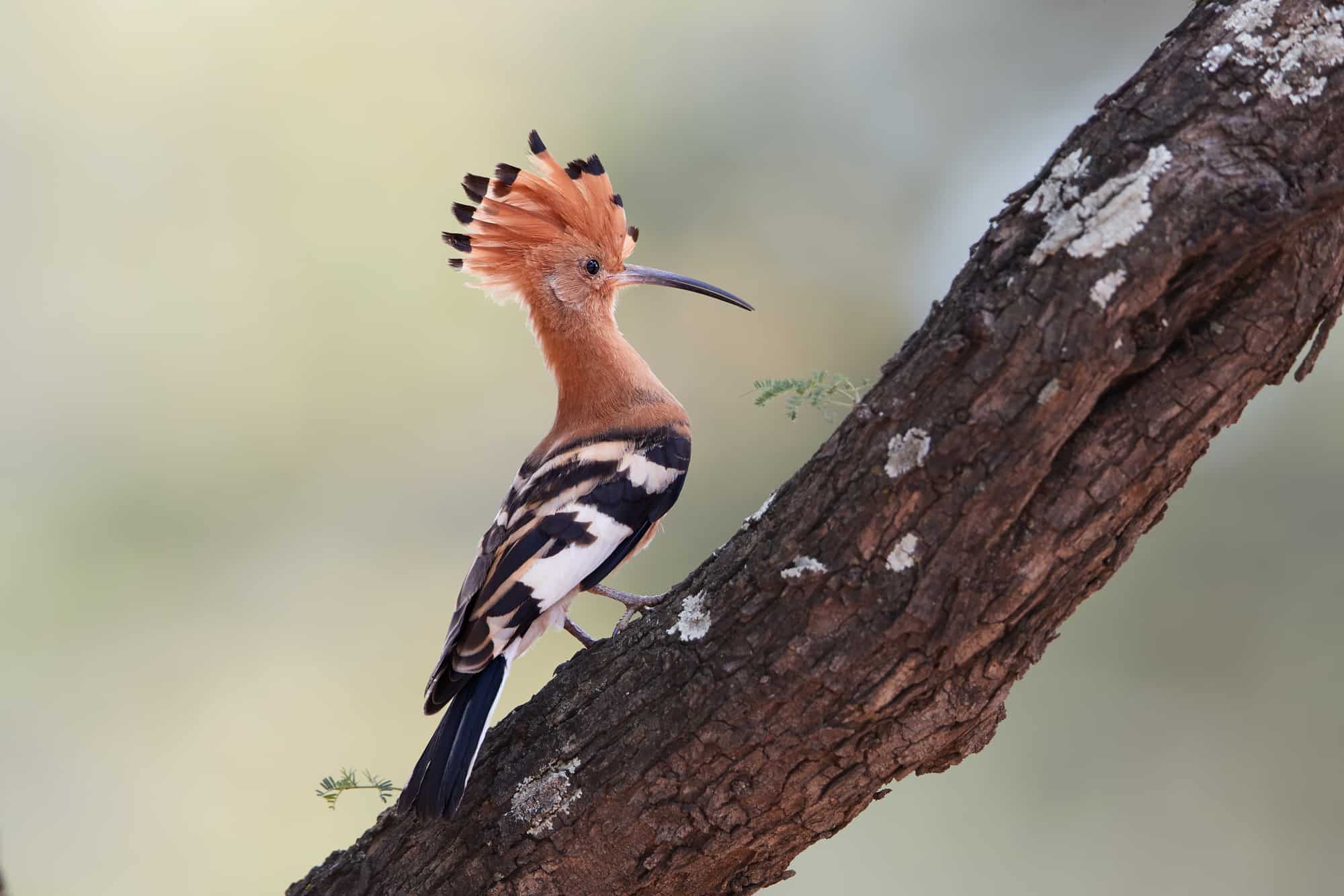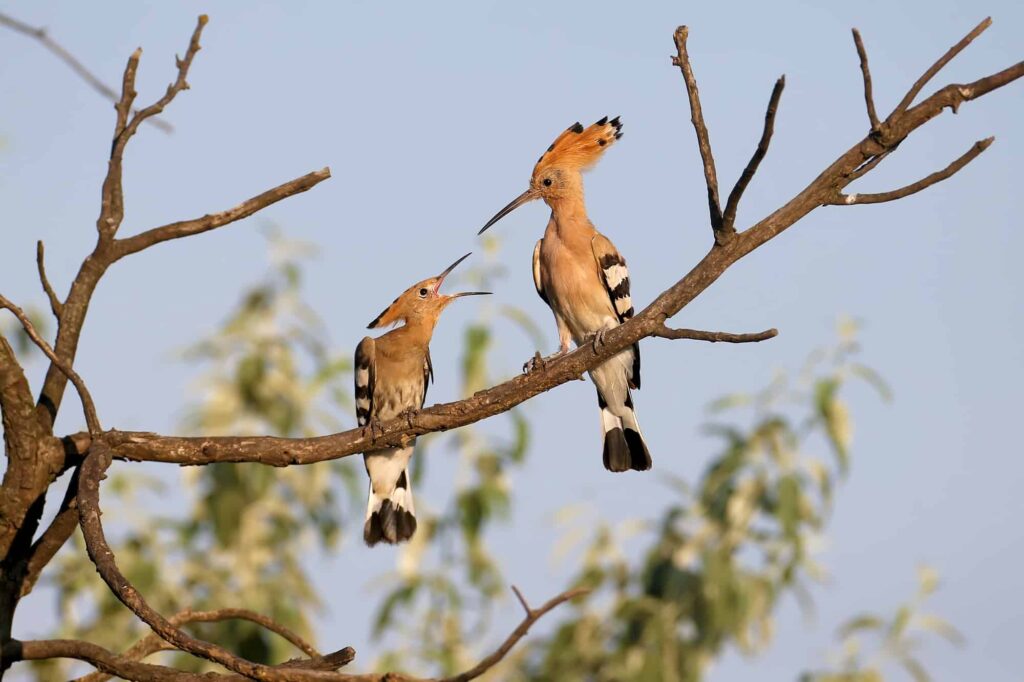Not long ago, a surprising picture found its way online: a Blue Crested Hoopoe! There’s just one problem: this Blue-Crested bird does not exist!
This picture was an edited picture of a Upupa Hoopoe, which is naturally orange, black, and white. It’s always a good idea to double-check any “discoveries” of unusual-looking birds and animals online.
The Blue-Crested Hoopoe isn’t real, but let’s take a look at the fascinating Hoopoe bird species!
What Is a Hoopoe?
A Hoopoe (pronounced “hoo-poo”) is a colorful bird that can be found in Africa, Asia, and Europe. The Hoopoe’s most distinctive feature is the crown of feathers on top of its head.
There are three kinds of Hoopoes:
- Eurasian Hoopoe
- Madagascar Hoopoe
- African Hoopoe
There is some debate among taxonomists regarding the division of birds into these species.
Some would prefer to categorize all Hoopoes as one distinct species, while others argue for the differentiation of these three types. Still, others will group the Eurasian and African Hoopoe as one species, but then identify the Madagascar Hoopoe as its own.
Eurasian Hoopoe

- Length: 25 – 32 cm (9.8 – 12.6 in)
- Weight: 48 – 89 g (1.6 – 3.1 oz)
- Wingspan: 44 – 48 cm (17 – 19 in)
The Eurasian Hoopoe is mostly orange with wings that are striped in black and white. Their crest spreads out like a Chinese fan. Most of the time, the fan is closed, but they will open it when they first land. They have a long, sharp bill.
Eurasian Hoopoes are found across Europe, the Middle East, India, and China. They are less common in central Africa but are plentiful in southern, eastern, and northwestern Africa.
They can be spotted in orchards, fields, and lawns, where they use their long, slender bill to probe the ground for insects.
Hoopoes get their name from the sound that the Eurasian Hoopoe makes. Their call sounds like “hoo-poo-poo!” Here’s a great video that captures their unique vocalizations.
Madagascar Hoopoe

- Length: About 32 cm (12.6 in)
- Weight: 57 – 91 g (2.0 – 3.2 oz)
- Wingspan: 44 – 48 cm (17 – 19 in)
The Madagascar Hoopoe looks nearly identical to the Eurasian Hoopoe, but there are a few key differences.
First, the Madagascar Hoopoe is slightly larger than the Eurasian Hoopoe. Additionally, its bill is thicker, and its coloring is slightly darker. The top wingbar is thicker than the top wingbar of the Eurasian Hoopoe, too.
The next big difference is in its range. Madagascar Hoopoes are exclusive to the island of Madagascar, just off the eastern coast of Africa. Their habitat includes dry forests, scrubby grasslands, and agricultural areas. They are cavity dwellers.
Finally, the last big difference is the bird’s song. Instead of “hoo-poo-poo,” Madagascar Hoopoes make a long, hollow-sounding trill.
African Hoopoe

- Length: 25-29 cm (9.8 – 11.4 in)
- Weight: 65-67 g (2.29 – 2.36 oz)
- Wingspan: 44-48 cm (17.3 – 18. 8 in)
African Hoopoes have the most vibrant coloration of the three Hoopoe species. Their feathers are dark, chestnut-orange, and they still have those recognizable black and white wing and tail stripes.
The African Hoopoe is not just more colorful than the Eurasian and Madagascar Hoopoe. The male also has one fewer band on its crest, and its primary feathers are black. Females of all species look more similar to one another.
African Hoopoes make the “hoo-poo-poo” sound that is associated with the Eurasian Hoopoe. They live in Europe, Madagascar, tropical Asia, and throughout most of Africa. That said, they are not found in the equatorial lowland forests of western and central Africa.
Frequently Asked Questions About Hoopoes
Let’s take a look at some of the most common questions that people ask about Hoopoes!
Which Hoopoe is Extinct?
The Hoopoe Starling (AKA: The Bourbon Crested Starling, the Huppe, the Crested Starling, and the Réunion Starling) was a pigeon-sized bird that was first documented by a naturalist in 1783. It was observed on Réunion Island in the Indian Ocean, near Madagascar.
The Hoopoe Starling had a thin, fan-shaped, white crest. Its body was mostly white, but it had gray-brown wings and yellow legs.
Unfortunately, the Hoopoe Starling went extinct thanks to a combination of the introduction of invasive rats, the arrival of invasive birds called Common Myna, and hunting by humans. In fact, the last documented Hoopoe Starling was shot in 1837.
Where Can I See a Hoopoe?
Traveling internationally is one of the best ways to see a Hoopoe. You can travel to any of the regions where they are commonplace to see them.
In Africa, Hoopoes usually stay put year-round. However, Hoopoes in Europe and northern Asia will migrate for the winter, usually to the tropics. You probably won’t see any Hoopoes on a winter vacation to Europe!
You can also find Hoopoes in a number of international zoos (we recommend that you always check to confirm that any zoo you are planning to visit is run ethically and responsibly). Unfortunately, we were unable to find any references to Hoopoes in North American zoos.
Have Hoopoes Ever Been Spotted in North America?
Yes! There is one record of a Hoopoe in North America. In 1975, a migrating Hoopoe was observed in Alaska’s Yukon Delta.
Are There Hoopoes in England?
Hoopoes do not breed in England, but they sometimes stop by on their long migration from Europe to Africa. There are usually about 100 Hoopoes that end up in England during the spring.
Why Is the Hoopoe the National Bird of Israel?
In May 2008, for Israel’s 60th anniversary, a national survey was conducted to choose the national bird. The Hoopoe won over the White-Spectacled Bulbul.
The Hoopoe is also included in the coat of arms of Armstedt and Brechten, both located in Germany. It is also the mascot of the University of Johannesburg.
Are Hoopoes Helpful to Humans?
Hoopoes eat a lot of the insects that we humans consider to be pests. This makes them a welcome addition to any region!
They help to reduce the number of insects in an area, including insects that can damage crops, carry diseases, and serve as an irritation to people.
There’s No Blue-Crested Hoopoe, But…
Now you know that there are no blue Hoopoes, but that the Hoopoe is still a fascinating and useful bird!
Their beautiful orange, black, and white coloring is already special, and we don’t need Photoshop to make these gorgeous, vibrant birds any prettier or more interesting.

